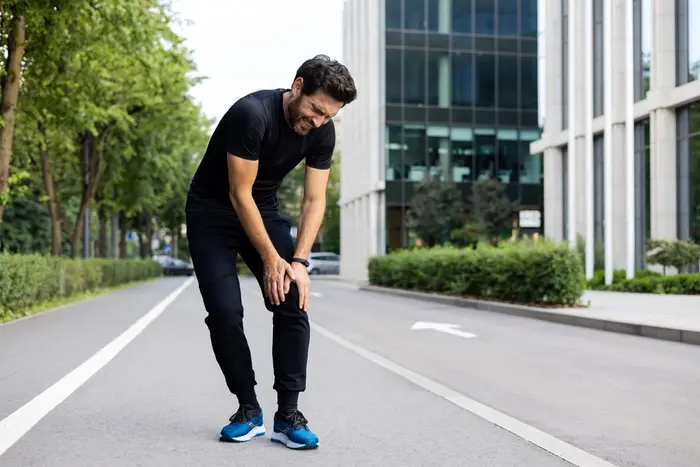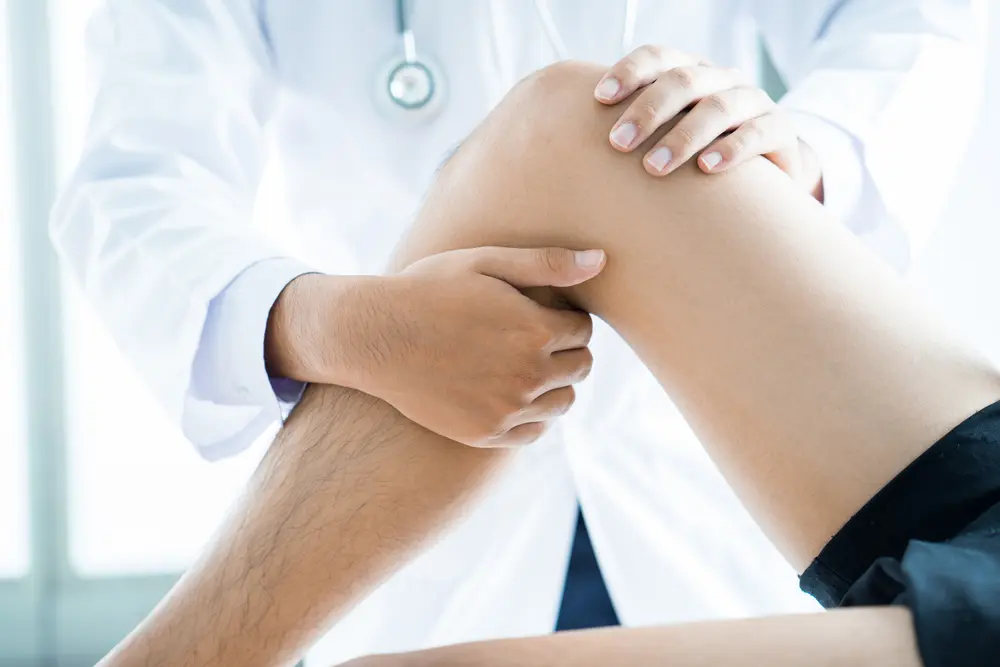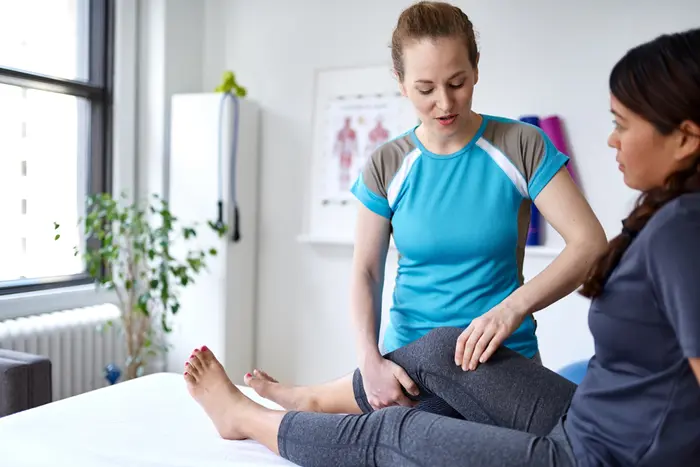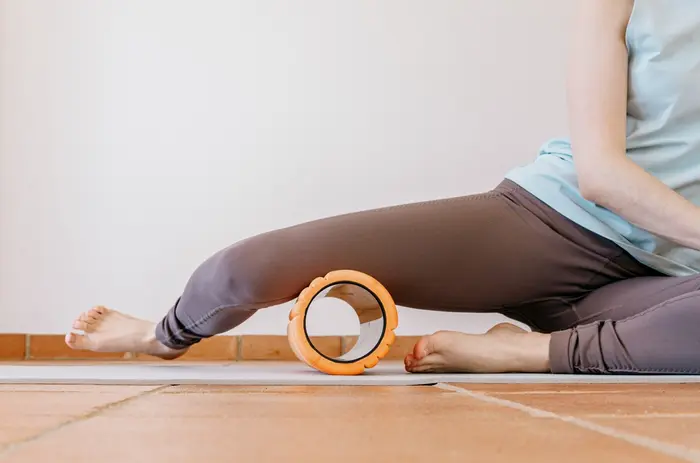Understanding Recovery Time for a Sprained Knee
A sudden twist during a morning jog, an awkward landing from a jump, or even a misstep on the stairs—knee sprains often strike when you least expect them. These injuries occur when the ligaments connecting your thigh bone (femur) to your shin bone (tibia) stretch or tear, usually due to excessive force or twisting. But here’s the good news: most knee sprains heal completely with the right care. The catch? Recovery time isn’t one-size-fits-all.
What Determines Sprained Knee Recovery Time?
Your knee is a complex hinge of bones, ligaments, and muscles. When a sprain happens, the severity of ligament damage dictates your healing timeline. Orthopedic specialists classify sprains into three grades, each with its own challenges and recovery windows.

Grade 1 Sprain (Mild): The “Overstretched” Ligament
- What Happens: Ligaments stretch slightly but don’t tear. Think of it like a rubber band pulled too far but still intact.
- Recovery Time: 1–2 weeks with proper rest.
- Symptoms: Mild swelling, tenderness, and slight discomfort when walking.
- Pro Tip: Dr. Sarah Mitchell, a sports medicine physician, notes, “Grade 1 sprains heal quickly if you avoid reinjury. Stick to low-impact activities like swimming during recovery.”
Grade 2 Sprain (Moderate): The Partial Tear
- What Happens: Ligaments tear partially, causing instability. Imagine that rubber band fraying but not snapping.
- Recovery Time: 3–6 weeks, depending on rehab consistency.
- Symptoms: Moderate swelling, bruising, and difficulty bearing weight.
- Critical Insight: A 2022 study in The American Journal of Sports Medicine found that 60% of Grade 2 sprains worsen due to premature return to sports.
Grade 3 Sprain (Severe): The Full Tear
- What Happens: Ligaments rupture completely, often requiring surgical repair.
- Recovery Time: 6–12 weeks (or longer if surgery is needed).
- Symptoms: Severe pain, inability to walk without support, and significant joint looseness.
- Reality Check: Only 10–15% of knee sprains reach Grade 3, per the National Institute of Arthritis.
Factors That Speed Up or Slow Down Healing
While the sprain grade sets the baseline, these variables fine-tune your recovery clock:
- Age: Younger patients heal faster due to better collagen production. For example, a 25-year-old athlete may recover 30% quicker than a 55-year-old with the same injury.
- Activity Level: Overeager gym-goers risk reinjury by skipping rest days.
- Rehab Consistency: Physical therapy adherence can shorten recovery by up to 40%, says the American Physical Therapy Association.
- Overall Health: Conditions like diabetes or obesity slow healing due to poor circulation.
Why Ignoring a Sprain Is a Recipe for Long-Term Trouble
A 2023 report from the Mayo Clinic warns that untreated Grade 2/3 sprains often lead to:
- Chronic instability (“wobbly knee” syndrome).
- Early-onset arthritis.
- Higher risk of future tears.
Translation: Patience now pays off later
Sprained Knee Recovery Timeline (Phases & Milestones)
Recovering from a knee sprain isn’t a sprint—it’s a carefully paced marathon. By breaking the process into phases, you’ll avoid setbacks and give your ligaments the time they need to heal. Let’s walk through each stage, from the first 72 hours to the final steps of rehab.
Phase 1: Immediate Care (0–72 Hours): Stop Swelling in Its Tracks
The moment you feel that pop or twist, your priority is damage control. Enter the RICE method—the gold standard for acute injuries, backed by the American Academy of Orthopaedic Surgeons.
Step-by-Step RICE Protocol:
- Rest: Avoid putting weight on the knee. Use crutches if walking is painful.
- Ice: Apply an ice pack (wrapped in a towel) for 15–20 minutes every 2 hours. Pro Tip: Freeze a water-filled paper cup for targeted ice massage.
- Compression: Use an elastic bandage or knee sleeve to reduce swelling. Don’t wrap too tight—you should fit two fingers under the bandage.
- Elevation: Prop your leg above heart level using pillows. Aim for 2–3 hours daily.

Why It Works:
- Ice constricts blood vessels, cutting swelling by up to 30%.
- Compression prevents fluid buildup, per a 2021 British Journal of Sports Medicine study.
Phase 2: Short-Term Recovery (1–2 Weeks): Regain Motion & Confidence
By day 4–5, swelling should start to fade. Now’s the time to reintroduce gentle movement—but listen to your body.
Top Exercises for This Phase:
- Quad Sets: Sit with legs straight, tighten thigh muscles for 5 seconds. Repeat 10x, 3x daily.
- Ankle Pumps: Move ankles up/down hourly to boost circulation.
- Heel Slides: Slowly slide your heel toward your buttocks (seated or lying down). Stop if pain exceeds 3/10.
Signs You’re Healing:
- Less bruising or redness.
- Ability to bend the knee 30–40 degrees without sharp pain.
Can You Walk on a Sprained Knee?
- Grade 1: Yes, with a limp. Use a brace for stability.
- Grade 2/3: Limit walking; crutches are advised for 7–10 days.
Keyword Integration: “healing stages of a sprained knee,” “can you walk on a sprained knee”
Phase 3: Long-Term Rehab (3–6+ Weeks): Rebuild Strength & Return to Life
This is where the magic happens. With most swelling gone, focus shifts to strengthening muscles that support the knee.
Best Exercises for This Phase:
- Mini Squats: Hold a chair for support, lower 6 inches, then rise. 3 sets of 12 reps.
- Resistance Band Walks: Place a band above knees, take 10 side steps left, then right.
- Step-Ups: Use a 4-inch step; lead with your injured leg to rebuild trust in the joint.
Returning to Activity:
- Jogging: Start with 5-minute intervals on soft surfaces (grass, treadmill).
- Sports Drills: For soccer players, practice passing; for hikers, try incline treadmill walks.
Expert Insight:
“Grade 2 sprains often feel ‘healed’ at 4 weeks, but ligaments take 6+ weeks to regain full strength,” says Dr. Lisa Tran, a physical therapist.

How to Speed Up Sprained Knee Recovery
Want to shave days off your recovery? These science-backed strategies work—when done right.
1. Double Down on RICE (But Do It Better)
- Ice Smarter: Use a gel pack instead of frozen peas—it conforms to the knee’s shape.
- Compression Upgrade: Swap basic bandages for a hinged knee brace (like DonJoy Velocity) if instability persists.
2. Start Early Rehab Exercises (Yes, Even Day 3!)
Quad Sets & Ankle Pumps aren’t just busywork. A 2020 Journal of Orthopaedic Research study found early mobility:
- Reduces scar tissue by 25%.
- Restores range of motion 50% faster.
Heel Slide Hack: Sit on a hardwood floor with socks on—your heel will glide smoother.
3. Choose the Right Knee Brace
4. Avoid These Re-Injury Traps
- High-Impact Sports: Skip basketball, tennis, or trail running until cleared by a PT.
- Ignoring Pain: A dull ache is normal; sharp pain means STOP.
- Skipping Warm-Ups: Spend 5 minutes on a stationary bike before exercises.
Red Flags: When to See a Doctor
While most knee sprains heal with time and care, certain warning signs demand professional attention. Ignoring these red flags can turn a simple sprain into a chronic issue.
1. Persistent Swelling After 1 Week
Swelling should peak within 72 hours and gradually subside. If your knee remains puffy or warm after 7 days, it could signal:
- Internal bleeding: Blood pooling in the joint (hemarthrosis).
- Infection: Rare but serious, especially if accompanied by fever.
Expert Insight: “Swelling beyond a week often means incomplete healing or secondary damage,” says Dr. Rachel Kim, an orthopedic surgeon.
2. Inability to Bear Weight
If you can’t take 4–5 steps without crutches by day 5 (Grade 1/2 sprains), suspect:
- Hidden fractures: High-impact sprains sometimes chip bones.
- Meniscus tears: The cartilage may be injured alongside ligaments.
3. Popping or Grinding Sensations
A loud pop at injury is normal, but ongoing clicks or crunches suggest:
- Loose cartilage fragments: Floating tissue that irritates the joint.
- Ligament entrapment: Torn ligament fibers catching in the joint.

Exercises for a Faster Recovery
Tailor these exercises to your recovery stage to rebuild strength without overloading healing tissues.
Early Stage (Weeks 1–2): Protect & Mobilize
- Straight Leg Raises
- How to Do It: Lie on your back, tighten your thigh, and lift your leg 6 inches. Hold 5 seconds.
- Benefits: Activates quads without bending the knee.
- Pro Tip: Place a rolled towel under your knee for support.
- Seated Hamstring Stretches
- How to Do It: Sit on a chair, extend one leg, and lean forward until you feel a gentle pull behind the knee.
- Why It Works: Improves flexibility without stressing ligaments.
Mid-Stage (Weeks 3–4): Strengthen & Stabilize
- Wall Sits
- How to Do It: Lean against a wall, slide down until knees are bent 30 degrees.
- Goal: Build endurance in quads and glutes.
- Step-Ups
- How to Do It: Use a 4-inch step. Step up with your injured leg first, then lower slowly.
- Common Mistake: Letting the knee cave inward—keep it aligned over the ankle.
Late Stage (Weeks 5+): Restore Function
- Single-Leg Balance Drills
- How to Do It: Stand on one leg for 30 seconds while brushing your teeth or washing dishes.
- Progress: Try closing your eyes or standing on a foam pad.
- Resistance Band Lateral Walks
- How to Do It: Place a band above your knees, step sideways while maintaining tension.
- Athlete Bonus: Mimics cutting motions used in soccer or basketball.
Preventing Re-Injury & Long-Term Care
A healed sprain doesn’t mean you’re invincible. Follow these strategies to safeguard your knee:
1. Strengthen Quadriceps & Hamstrings
- Lunges: Forward, reverse, or lateral (start with bodyweight).
- Leg Press Machine: Use light weights (50–70% of body weight).
- Stat: Strong quads reduce knee strain by 40%, per the Journal of Strength and Conditioning Research.
2. Warm-Up Like a Pro
- Dynamic Stretches: Leg swings, hip circles, and bodyweight squats.
- Foam Rolling: Target quads, IT bands, and calves for 5 minutes pre-workout.
3. Invest in Supportive Footwear
- Look For: Arch support, cushioned soles, and a wide toe box.
- Avoid: Worn-out shoes—replace them every 300–500 miles.

FAQs About Sprained Knee Recovery
Q: Can a knee sprain heal without surgery?
A: Yes! Grade 1–2 sprains heal with rest, ice, and rehab. Grade 3 sprains may need knee surgery if the ligament is fully torn and causing instability.
Q: Is it OK to stretch a sprained knee?
A: After 72 hours, gentle stretching prevents stiffness. Avoid aggressive yoga poses like pigeon pose until cleared by a PT.
Q: How to sleep with a sprained knee?
A: Elevate your leg with a pillow under the calf (not the knee) to reduce swelling. Side sleepers can place a pillow between the knees.
Q: How long should I rest a sprained knee?
A:
- Grade 1: 3–5 days of rest, then gradual activity.
- Grade 2: 1–2 weeks of rest, followed by PT.
Conclusion: Patience Pays Off
Recovering from a knee sprain hinges on respecting your body’s timeline. Here’s a quick recap:
- Grade 1: 1–2 weeks of rest + light exercises.
- Grade 2: 3–6 weeks of rehab + brace support.
- Grade 3: 6–12 weeks (or surgery) + intensive PT.
Consistency with exercises like step-ups and resistance band walks, paired with smart prevention strategies, will help you return to hiking, sports, or even Zumba classes stronger than before. Remember: Healing isn’t linear, but every small effort adds up.
